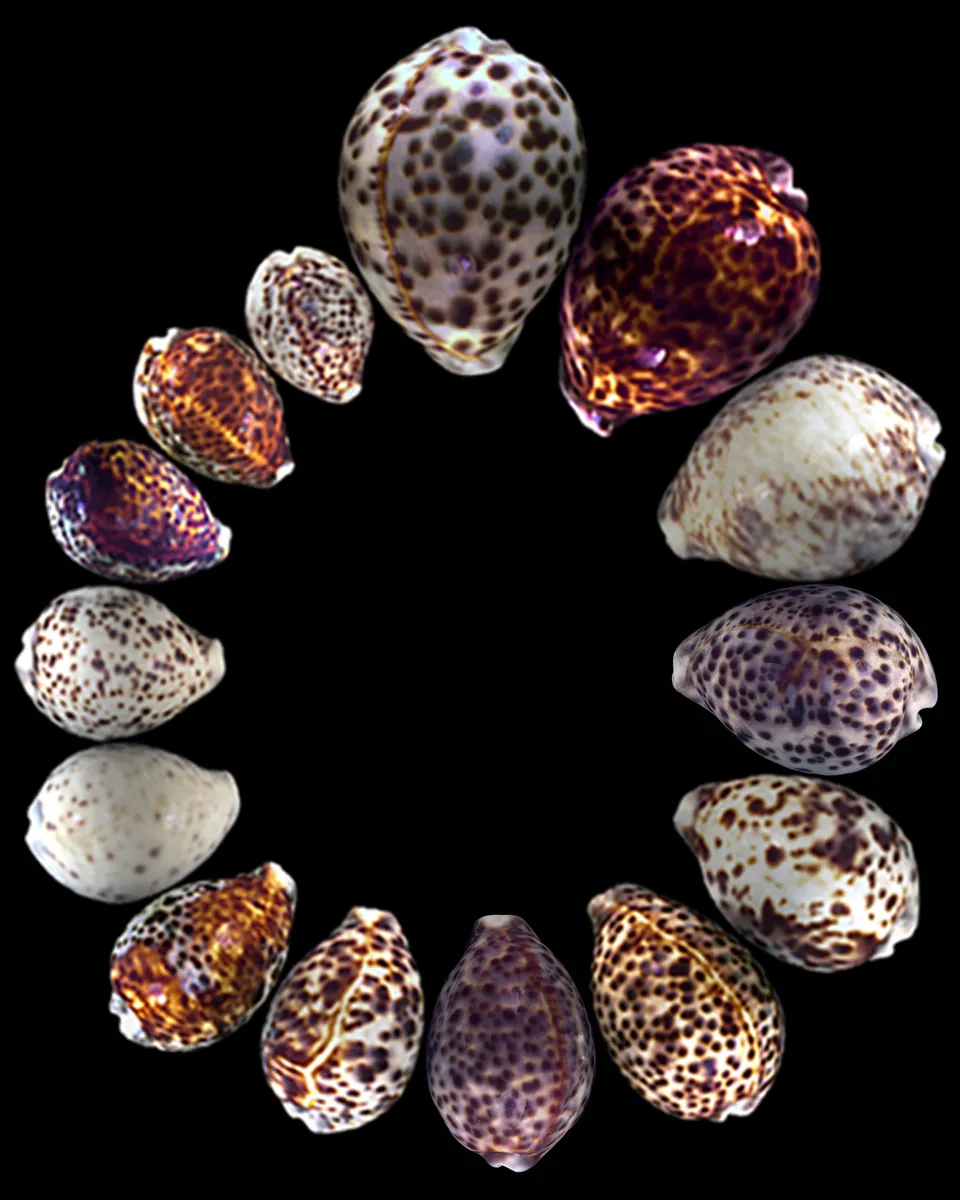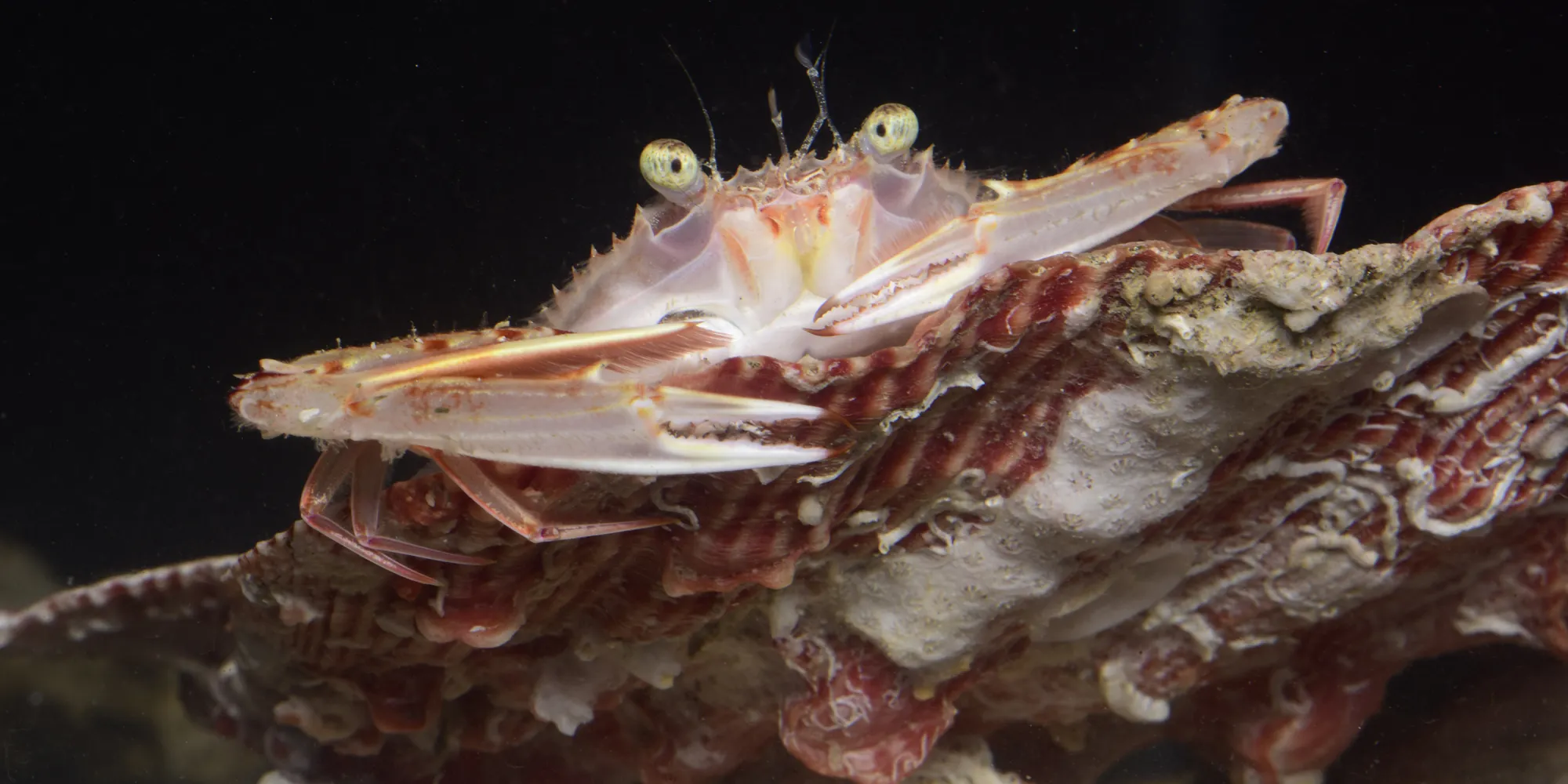
Search

Cowries

Written by Yolanda Villacampa
Collections at the National Museum of Natural History may include many specimens of one species, which ensures that the naturally occurring range of differences is represented for use in comparative studies. This image illustrates the variety of colors, patterns, shapes and sizes that can occur within tiger cowries, a species of tropical snails. The range of this particular species encompasses most of the tropical Pacific from Polynesia and Hawaii in the east to Japan, Singapore and Australia in the west. These mature tiger cowries have been collected from the throughout this range, where live specimens can be found in ankle deep waters down to 30 feet on reefs and under coral rocks. The largest cowries inhabit the coastal waters of Hawaii. In fact, the largest shell in the image was found off the coast of Oahu, Hawaii, and is about 124 mm long. Other shells shown here were collected in Fiji, New Caledonia, Guam, Okinawa, Indonesia, Society Islands, Caroline Islands, Samoa Islands, Marshall Islands, Vanuatu and Tonga.
Snails are mollusks that belong to the phylum Mollusca and class Gastropoda (snails and slugs). Researchers study snail body parts using the scanning electron microscope (SEM) to magnify features such as shell sculpture, radulae (teeth), reproductive organs and opercula which will assist with identifying and classifying different species.

Foot – soft part of body used for locomotion that also contains mucous secreting glands.
Mantle – soft part of body that secretes protein and calcium carbonate to build, repair and enlarge the shell. It may be used as a defense mechanism in some acid producing species of cowries. Cypraea clandestina secretes sulfuric acid when it is disturbed.
Radula – the ribbon-like structure, located in the mouth, made of chitin that can consist of several rows and different types of teeth used to scrape plant material (herbivorous species) or to bore through the shells of prey (carnivorous species).
The radula is sometimes called the “tongue”. Cowries have been observed feeding on algae, sponges, seaweed, carrion and other gastropods.